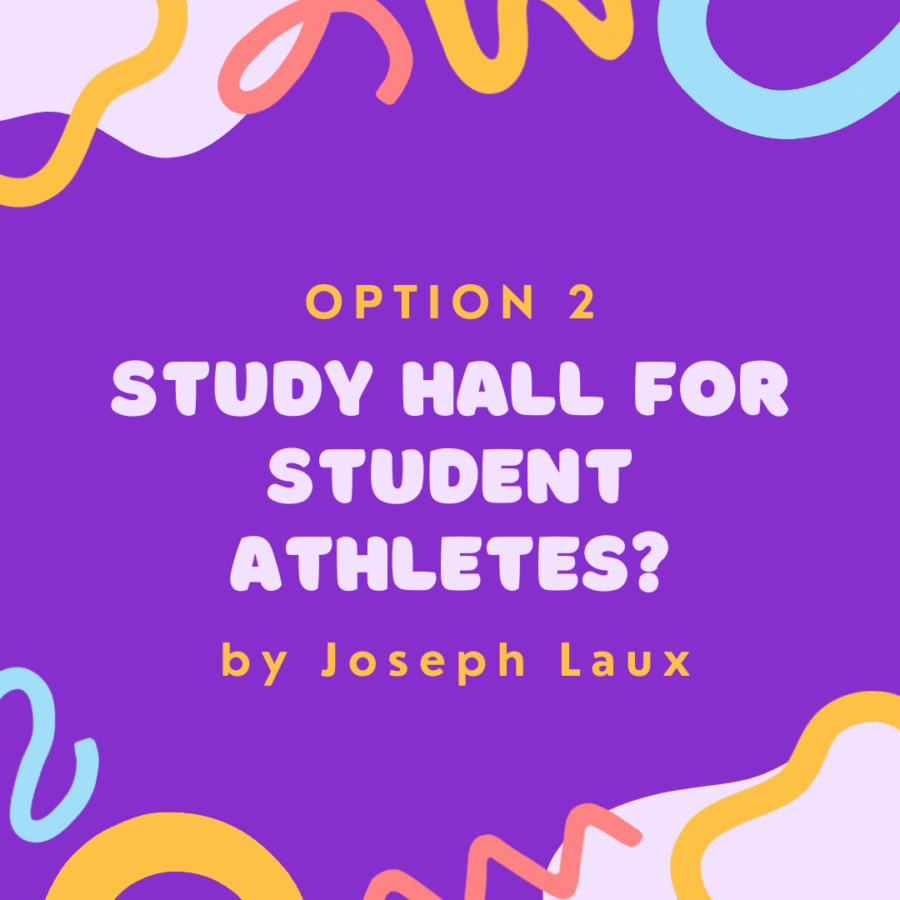The Case for Option Two: Study Hall for Athletes
High schools across New Jersey, from Edison to Wall Township have expanded the “Option Two” program to allow their athletes to take study hall instead of gym. Option Two is a program which allows students to gain credits towards high school graduation in an alternative way. Morris Hills, like other schools in the state, should use Option Two to allow our athletes to take study hall instead of gym.
The most obvious benefit for instituting this Option Two is that athletes would simply get more time during the day to do homework. Considering gym classes meet two or three times in a five-day week, athletes would gain up to four and a half hours of extra study and homework time. This could go a long way in allowing our athletes the time to adequately complete their assignments, so they can go to bed earlier.
Morris Hills junior, Ben Green, agrees with the benefits regarding study and homework time. He explains, “I typically have three to four-plus hours of homework each night. By the time I get home from practice and complete all of my work, I have little time left for sleep.” He further mentions that every other school day, “an extra hour and a half of homework/study time would go a long way in decreasing stress and improving my sleep schedule, along with allowing me to reach my full academic potential. In place of gym class, I would be able to gain nearly two hours of sleep, finish studying for a test that I have later in the day, and still get a ton of exercise.”
While most advocates for Option Two focus on the benefits for athletes, non-athletes would also benefit. Gym classes will inevitably become smaller if option two for athletes was initiated. With smaller class sizes, gym teachers would be able to design better, more innovative classes for the students that remain.
Adam Simkins, a junior at Morris Hills, likes the idea of smaller classes. He said, “I feel that smaller classes, in general, allow for a more inclusive class for the people that need time for physical fitness the most. A non-athlete gym class could also reduce the imbalance in athletic skill level present in the current PE. environment. All students take the same physical education class, which can prove to be a problem. Comparably, if all students were to take the same level history or math class, honors-level and AP students would dominate the class while students that may struggle would receive less attention and assistance”.
Mr. Ansaldi, a physical education teacher at Morris Hills, disagrees with the notion that student-athletes should be allowed to take study hall over gym. He would rather see than get more physical activity by separating students into classes by their physical abilities. He notes that this would allow gym teachers to design gym classes that would enable everyone to succeed.
While some may argue that we should be maximizing the amount of physical activity high school students get, taking gym and playing a sport combined together account for much more physical activity than what is needed. The CDC recommends that adolescents aged 6-17 “should do 60 minutes or more of moderate to vigorous-intensity physical activity each day.” It’s safe to say that most sports practice and play at least five days a week, for two hours a day. This alone means that most, if not all, Morris Hills athletes easily exceed the daily recommended amount of exercise.
When Mr. Haraka, Morris Hills Athletic Director, was asked to comment, he said he was against “automatically granting approval for the [Option Two] program.” He feels that athletes who participate in the program would lose out on the “inherent lessons” learned in PE such as “lifelong fitness, teamwork, leadership character education, and many other positive underlying benefits.”
While I do agree that study hall has fewer benefits than physical education class, the question should be, do we need more of the same? Morris Hills does not require students to ‘double dip’ in any other specific subject area. In fact, the district offers many different paths to graduation. Physical education is the only subject where the district restricts the paths that a student can take to achieve their physical fitness goals.
As is the case in some other New Jersey schools, Option Two should be given consideration. There can be a compromise to allow student-athletes the flexibility to tailor their own physical educational experiences, which the status quo only limits.


